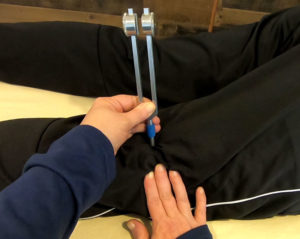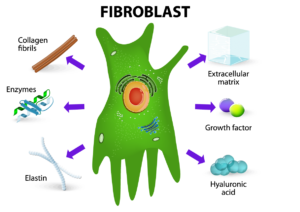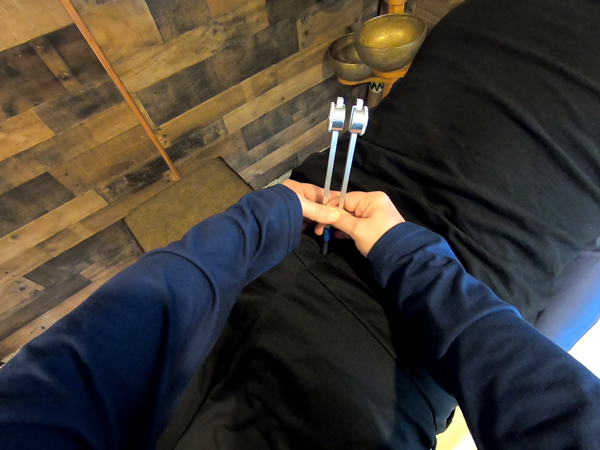 In our Vibrational Fascia Release Technique(TM) classes, we chose to use one specific tuning fork frequency for every protocol and session. For the past few years at NEHC, we have been conducting our own research including whether the accepted theory of specific frequencies are needed to heal certain ailments. We picked the weighted 128hz tuning fork primarily due to its construction and length of the tines. At 128hz, this fork is engineered with the tines at a length where we could strike the fork against the palm of our hand (preferred VFRT method) without causing repetitive stress injuries for the therapist. The tines were thick enough to sustain a high amplitude for a long period necessary to affect the fascia.
In our Vibrational Fascia Release Technique(TM) classes, we chose to use one specific tuning fork frequency for every protocol and session. For the past few years at NEHC, we have been conducting our own research including whether the accepted theory of specific frequencies are needed to heal certain ailments. We picked the weighted 128hz tuning fork primarily due to its construction and length of the tines. At 128hz, this fork is engineered with the tines at a length where we could strike the fork against the palm of our hand (preferred VFRT method) without causing repetitive stress injuries for the therapist. The tines were thick enough to sustain a high amplitude for a long period necessary to affect the fascia.
Today, I found some supporting research in the Journal of Biomechanics where they used a mechanical device to measure specific frequencies as a bovine section of intervertebral discs were vibrated to see if the controlling cells (fibroblasts) would express or turn on the mechanisms to generate the materials making up the extracellular matrix. This includes both Type I and Type II collagen and the substances making up the proteoglycan gel in the ECM. The area of focus was in the nucleus pulposus or disc soft tissue. However, the same responses could be expected of other ECM locations including the superficial layers just underneath our skin where VFRT Therapists focus during a typical session.
 The study determined that frequency played little role in the expression of the genes for both collagen types and the ones to create the gel. The most interesting part of this paper was a validation of the amount of amplitude required for gene expression of Type I collagen (the most prevalent type in our body). Specifically, the fibroblast cell requires a high degree of vibration amplitude before turning expressing the genes that manufacture Type I collagen. Amplitude equates to more pressure on the fibroblast cell wall which mechanically transfers to the inside of the cell through mechanotransduction.
The study determined that frequency played little role in the expression of the genes for both collagen types and the ones to create the gel. The most interesting part of this paper was a validation of the amount of amplitude required for gene expression of Type I collagen (the most prevalent type in our body). Specifically, the fibroblast cell requires a high degree of vibration amplitude before turning expressing the genes that manufacture Type I collagen. Amplitude equates to more pressure on the fibroblast cell wall which mechanically transfers to the inside of the cell through mechanotransduction.
We have noticed through our own research that there was a definite threshold to pressure and length of strike before there was a change to the current condition. Pressure is such an important part of rapid pain relief and restoration of mobility that we made it one of our 10 Core Skills each VFRT Therapist is trained to perfect.
There are a few places in the fascia research papers and books where both stretch and vibration are stated as the key factors to changing the current status of a cell, and this is the first time we have found the connection to this determination of what really happens when a tuning fork is applied to the skin. There are other factors involved like the ability for free fluid to diffuse through the proteoglycan gel of the extracellular matrix and through the thick walls of collagen fibers, but I will save this information for another post.
Reference: Geoffrey Desmoulin, Carol Reno, and Christopher Hunter, Free Axial Vibrations At 0 to 200 Hz Positively Affect Extracellular Matrix Messenger Ribonucleic Acid Expression in Bovine Nucleus Pulposi, SPINE Volume 35, Number 15, pp 1437–1444 ©2010


